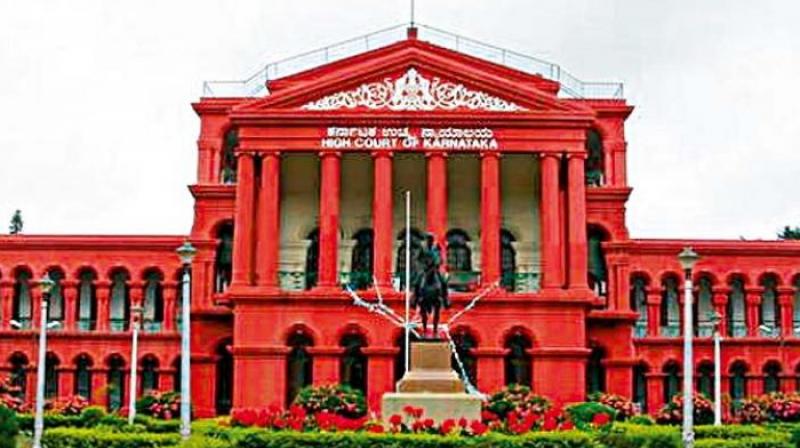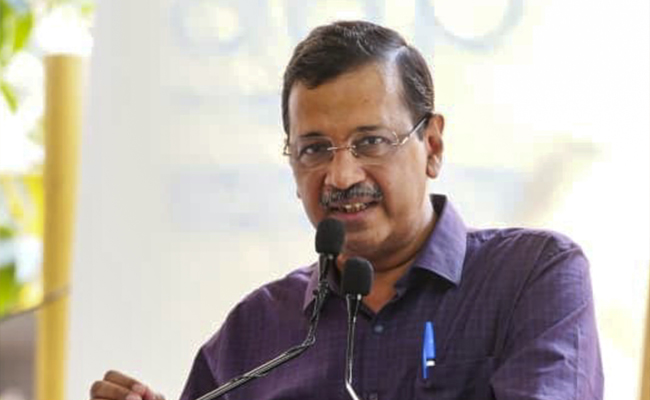Bengaluru: The High Court of Karnataka on Thursday constituted a 10-member high-level committee to iron out differences arising between the advocates, police and the administration.
The panel includes the Advocate General, the Karnataka DGP and the Principal Secretary of the Home Department.
The formation of the committee was announced by the division bench of Chief Justice Prasanna B Varale and Justice Krishna S Dixit who were hearing a petition taken up on its own over the incident in Chikkamagaluru where an advocate was beaten up by the police. This led to a law and order problem in Chikkamagaluru.
The state handed over the case to CID to investigate.
The High Court today said that in addition to the investigation agency doing its job, ''In our considered opinion which the tall members of the Bar too agreed all stakeholders should gather at one place to discuss the matter and generate a congenial atmosphere and restore amiability between the Bar, the police and the District administration.'' The other members of the committee are senior advocate and former Advocate General, Uday Holla and senior advocates Jaykumar S Patil, V Lakshminarayana, KN Phaneendra, D R Ravishankar, Vivek Subba Reddy, president of the Advocates Association, Bengaluru and Azad Ali Khan, president of the Chikkamagaluru Bar Association.
The committee was directed to meet at the Advocate General’s office on December 9 at 11 am. It will then submit its recommendations to the High Court.
Six police officers of the Chikkamagaluru Town Police Station, including a sub-inspector of police, were suspended over the November 30 incident in which advocate Preetham was caught by the police riding a two-wheeler without a helmet. He was taken to the police station where he was allegedly assaulted by the police. After protests by the advocates, the policemen were suspended. Five cases were registered against the policemen and the case was handed over to the CID. On Thursday, the High Court was informed that some police officers had gone on strike over the suspension.
Expressing serious concern, the court said, ''We share the same anguish. Strict discipline being the first requirement of the police force, it would be a case of fence swallowing the crop. What a section of the police staff has allegedly done is absolutely unacceptable to this court and to the civil society.'' However, the court refused to direct the arrest of the police officers involved in the November 30 incident and said restraint was the need of the hour. Citing the Supreme Court judgement in Lalita Kumari Vs Government of Uttar Pradesh, the court said that it was an issue pertaining to the domain of the Investigating Agency and ''therefore restraint in this regard is warranted.'' The court adjourned the hearing to December 12.
Let the Truth be known. If you read VB and like VB, please be a VB Supporter and Help us deliver the Truth to one and all.
Panaji (PTI): As part of a crackdown against tourist establishments violating laws and safety norms in the aftermath of the Arpora fire tragedy, Goa authorities on Saturday sealed a renowned club at Vagator and revoked the fire department NOC of another club.
Cafe CO2 Goa, located on a cliff overlooking the Arabian Sea at Vagator beach in North Goa, was sealed. The move came two days after Goya Club, also in Vagator, was shut down for alleged violations of rules.
Elsewhere, campaigning for local body polls, AAP leader Arvind Kejriwal said the fire incident at Birch by Romeo Lane nightclub at Arpora, which claimed 25 lives on December 6, happened because the BJP government in the state was corrupt.
An inspection of Cafe CO2 Goa by a state government-appointed team revealed that the establishment, with a seating capacity of 250, did not possess a no-objection certificate (NOC) of the Fire and Emergency Services Department. The club, which sits atop Ozrant Cliff, also did not have structural stability, the team found.
The Fire and Emergency Services on Saturday also revoked the NOC issued to Diaz Pool Club and Bar at Anjuna as the fire extinguishers installed in the establishment were found to be inadequate, said divisional fire officer Shripad Gawas.
A notice was issued to Nitin Wadhwa, the partner of the club, he said in the order.
Campaigning at Chimbel village near Panaji in support of his party's Zilla Panchayat election candidate, Aam Aadmi Party leader Kejriwal said the nightclub fire at Arpora happened because of the "corruption of the Pramod Sawant-led state government."
"Why this fire incident happened? I read in the newspapers that the nightclub had no occupancy certificate, no building licence, no excise licence, no construction licence or trade licence. The entire club was illegal but still it was going on," he said.
"How could it go on? Couldn't Pramod Sawant or anyone else see it? I was told that hafta (bribe) was being paid," the former Delhi chief minister said.
A person can not work without bribing officials in the coastal state, Kejriwal said, alleging that officers, MLAs and even ministers are accepting bribes.





